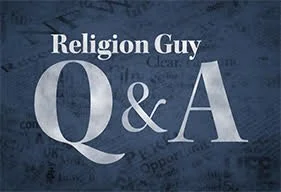THE QUESTION:
Why do images of the Prophet Muhammad so deeply offend Muslims?
THE RELIGION GUY’S ANSWER:
This issue has erupted unexpectedly at Methodist-related Hamline University in Minnesota. Last October, adjunct art teacher Erika Lopez Prater showed an online class two medieval paintings in which pious Muslims had portrayed the Prophet Muhammad receiving Quran revelations from the angel Gabriel.
Lopez Prater warned Muslim students in advance so they could avert thir eyes. Nonetheless, the president of the Muslim Students Association (MSA) complained that Lopez Prater’s “trigger warning” itself showed she had committed an offense against Islam. Hamline’s President Fayneese Miller called Lopez Prater’s deed “Islamophobic” (she later apologized for that word) and the school decided not to renew the teacher’s contract.
The faculty, alarmed over academic freedom, called January 24 for Miller’s resignation in a lopsided 71–12 vote of no confidence. Then in response to that response, 13 leaders from campus groups like the MSA, Student Congress, and diversity committee endorsed Miller’s leadership and accused the faculty of betraying students.
Meanwhile, Lopez Prater is suing the university for defamation and religious discrimination.
Christiane Gruber, a well-known professor of Islamic art at the University of Michigan, entered the fray to defend and explain her Hamline colleague’s classroom behavior in this article at TheConversation.com.
Whatever current scruples, Gruber said, Muslim artists centuries ago did in fact depict Muhammad and both Muslim and non-Muslim art historians regularly teach about this. Paintings of Muhammad are collected at Istanbul’s renowned Topkapi Palace Library, among other places.
The art depicting Muhammad centuries ago was most common among Shia and Sufi Muslims, not rigorists in the faith’s dominant Sunni branch. Muslim painters in the 14th Century depicted the Prophet’s face, Gruber said, while those in later times piously concealed it with a veil or nimbus of light but showed his body, which is no longer deemed acceptable.
Modern sensitivities burst into the news in a dramatic U.S. terror attack 46 years ago. A dozen gunmen in a Hanafi breakaway from the racialist Nation of Islam occupied a city office building, B’nai B’rith headquarters and the Islamic Center, seized 150 hostages, and paralyzed central Washington, D.C. for 39 hours. Fortunately, there was only one death, of a radio reporter.
The gunmen wanted the city to hand over the prisoners who had slaughtered the Hanafi leader’s children and grandchildren during a sectarian feud. But they had a second demand, that no showings be allowed of the movie “Mohammad, Messenger of God.” Though the film is reverential and evangelistic, and though Muhammad is never seen but only his shadow, and never speaks, the protesters judged it to be sacrilegious.
In another well-remembered incident in 2015, terrorists murdered 12 and injured 11 at the Paris office of the satirical Charlie Hebdo magazine, which had not only portrayed Muhammad but in the form of cartoons that subjected him to ridicule.
A very basic belief is at stake here: Islam’s abhorrence of idolatry, which is extended from images of false pagan gods for worship to any images of human beings.
CONTINUE READING: “Why do images of the Prophet Muhammad so deeply offend Muslims?”, by Richard Ostling.
FIRST IMAGE: Art from Reddit post about South Park censoring images of Muhammad: “Why is Mohammed censored i mean this episodes 200+201 are Not available in my language so i Think it was banned but if it was banned why can i only see a censored version.”


